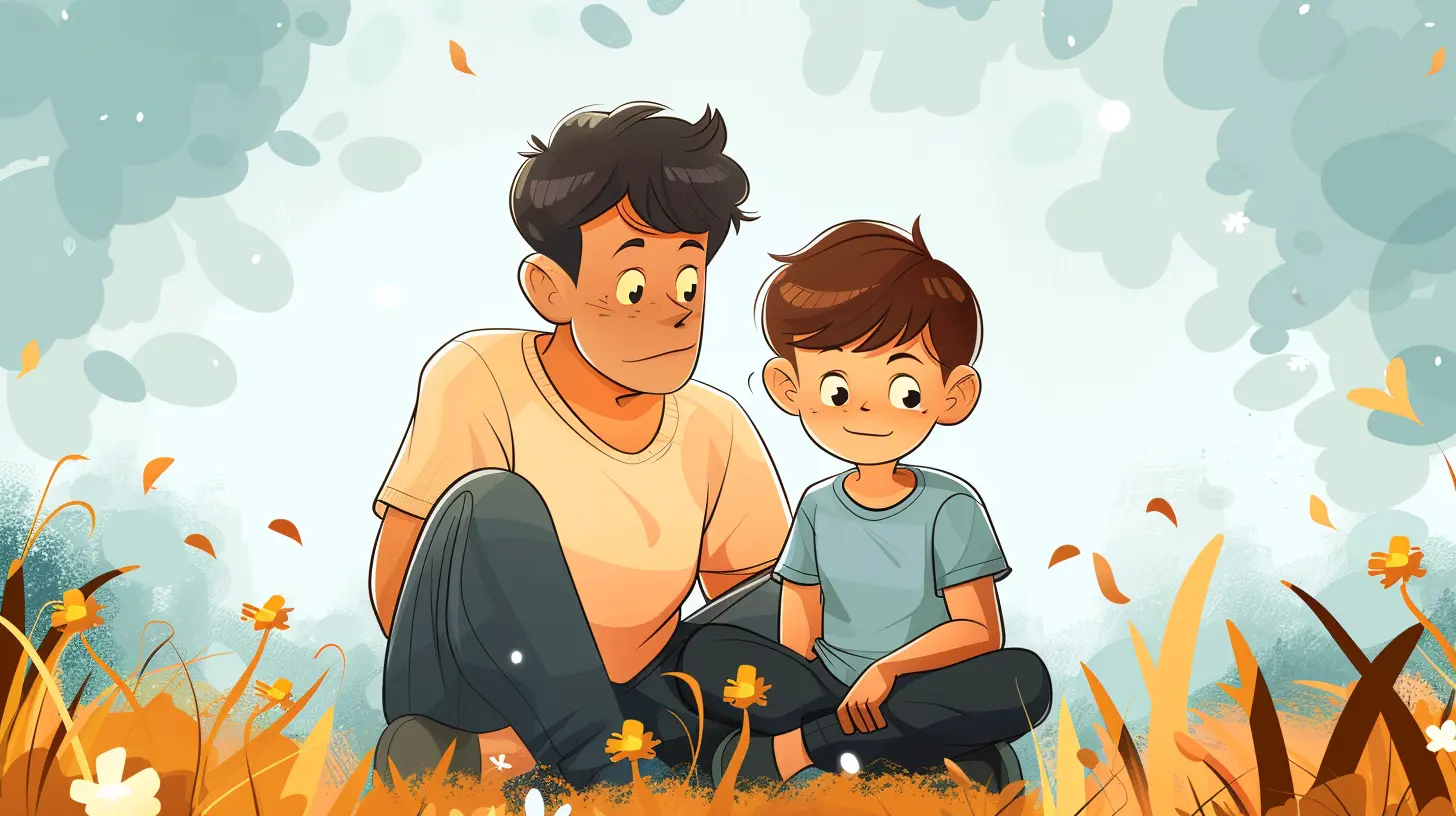How to Navigate Big Emotions During Transitions
11 July 2025
Change is a part of life, but let's be real—it's not always easy, especially for kids. Whether it’s starting a new school year, moving to a different home, welcoming a new sibling, or even saying goodbye to a beloved teacher, transitions can stir up big emotions. As parents, we might struggle to help our children (and ourselves) manage these feelings in a healthy way.
So, how do we support our kids through these emotional rollercoasters without losing our sanity? Let’s break it down. 
Understanding Big Emotions in Transitions
Transitions can bring excitement, fear, frustration, and sadness—all at the same time. And while adults have somewhat learned to manage these emotions (most days, at least), kids are still figuring it all out.Children thrive on routine and predictability. When that stability is shaken, they may feel overwhelmed, leading to outbursts, meltdowns, withdrawal, or even regressions in behavior. As parents, it’s crucial to recognize that these reactions are not signs of "bad behavior" but rather indicators of their inner struggles.
Why Are Transitions So Hard for Kids?
Think about the last time you had a major life change—starting a new job, moving to a different city, or even adjusting to a new schedule. It probably felt both exciting and nerve-wracking, right? Kids feel the same way, but since their brains are still developing, they lack the coping skills and emotional vocabulary to express what they’re going through.Here are a few reasons why transitions hit them harder:
- Loss of control – Kids don’t make the big decisions in their lives, which can make change feel scary.
- Fear of the unknown – Not knowing what to expect can create anxiety.
- Emotional attachment – Leaving behind familiar people, places, or routines can be heartbreaking.
- Sensory overload – New experiences often mean new sounds, sights, and sensations that can overwhelm young children.
Now that we understand why transitions are tough, let's dive into how we can help our little ones manage these big emotions. 
Strategies for Helping Kids Navigate Big Emotions
1. Acknowledge Their Feelings
The first step? Validate their emotions. Instead of dismissing their fears with a quick "You’ll be fine!" try something like, "I can see that you're feeling nervous about starting at a new school. It’s okay to feel that way."When kids feel heard, they’re more likely to open up and process their emotions rather than bottling them up.
2. Prepare Them in Advance
Surprises are great for birthdays, not so much for big life changes. Whenever possible, give your child a heads-up about an upcoming transition.- If you're moving, show them pictures of the new house and explore the neighborhood together.
- If they’re starting school, visit the campus beforehand and meet their teacher if possible.
- If a new sibling is on the way, read books about welcoming a baby and talk about what life might look like when the baby arrives.
Preparation helps reduce anxiety by making the unknown feel a little more familiar.
3. Keep Routines as Consistent as Possible
While change is happening in one area of their life, try to keep other routines steady. If bedtime has always included a story and a cuddle, stick to that. Familiar routines act as an anchor, giving kids a sense of security even when everything else feels uncertain.4. Offer Choices to Give Them a Sense of Control
Change can make kids feel powerless. One way to ease this is by giving them small choices that make them feel involved. For example:- "Would you like to pack your lunch or pick out your first-day outfit?"
- "Do you want to say goodbye at the front door or inside the classroom?"
- "Would you like a hug or a high-five before I drop you off?"
These small decisions help kids regain control in a healthy way.
5. Use Storytelling and Play
Kids process emotions through play, so why not use it to your advantage? Role-playing scenarios like "pretend school" or "moving day" can help children visualize and prepare for what's ahead.Storytelling is another powerful tool. Share personal stories about times you navigated change and how you managed your emotions. Knowing that even grown-ups face transitions can be comforting.
6. Teach Coping Strategies
Equip your child with tools to manage their emotions. Simple techniques like deep breathing ("Smell the flower, blow out the candle") or squeezing a stress ball can work wonders.Another great option is a "calm-down corner" in your home with cozy pillows, stuffed animals, or a sensory bin to help them self-regulate when feeling overwhelmed.
7. Be Patient with Regression and Outbursts
Transitions can cause temporary setbacks, such as potty-training regressions, trouble sleeping, or even tantrums that seemed to have disappeared months ago. This is normal! Rather than reacting with frustration, respond with understanding and reassurance.Your child isn't trying to be difficult; they’re simply struggling with big emotions and need your support to feel safe again.
8. Lead by Example
Let’s be honest—adults aren’t always great at handling transitions either. If you're feeling stressed about a big change, your child will pick up on it.Model healthy coping strategies by talking openly about your feelings:
- "I’m feeling a little nervous about our move too, but I know we’ll make great new memories in our new home."
- "Starting a new job is exciting, but I also feel a little unsure. So, I’m making a list of things that help me feel prepared!"
When kids see you navigating change with resilience, they’ll learn to do the same. 
When to Seek Additional Support
Sometimes, despite our best efforts, a child may struggle more than expected. If you notice prolonged anxiety, excessive clinginess, frequent nightmares, or extreme withdrawal, it might be a good idea to seek support from a pediatrician, school counselor, or child therapist.There’s no shame in asking for help—sometimes, an outside perspective can make all the difference in helping your child work through their emotions. 
Final Thoughts
Transitions are never easy, but with the right support, kids can learn to navigate big emotions in a way that builds resilience and confidence. By validating their feelings, keeping routines stable, and equipping them with coping tools, we help them feel safe even in the midst of change.And remember, parenting is a journey—not a destination. Some days will be smooth, and others may feel like you’re riding an emotional rollercoaster. But at the end of the day, your presence and support mean more to your child than any perfect parenting strategy ever could.
So take a deep breath, offer a reassuring hug, and remind yourself: You’ve got this.
all images in this post were generated using AI tools
Category:
Emotional IntelligenceAuthor:

Zelda Gill
Discussion
rate this article
1 comments
Zaid McAlister
“Emotions are like spaghetti—twisted!”
July 17, 2025 at 2:32 AM

Zelda Gill
Absolutely! Just like spaghetti, our emotions can be complex and intertwined, but understanding them can help us navigate transitions more smoothly.


